Architecture Leaders Today
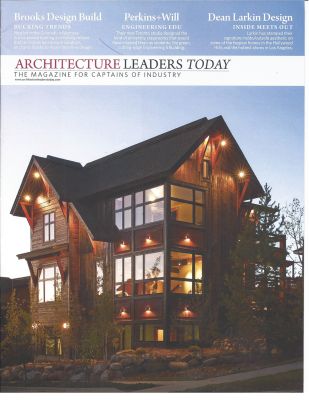


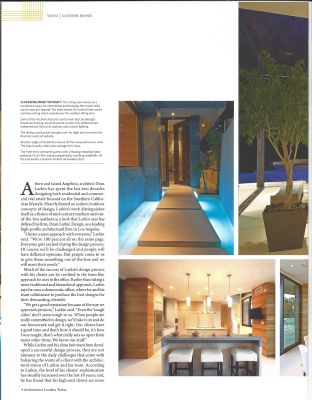
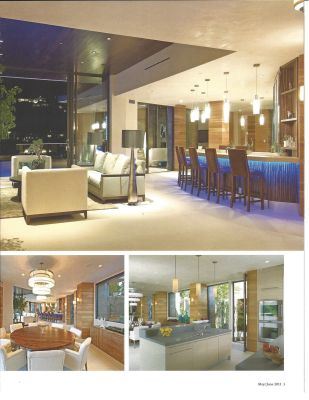

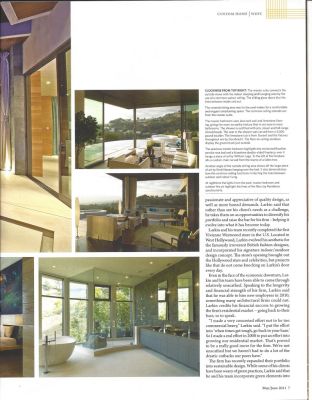
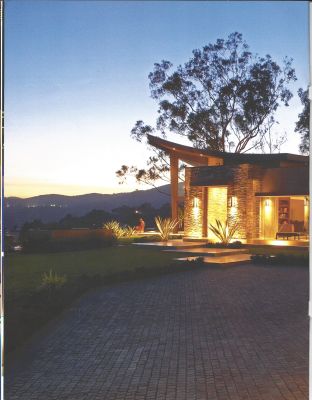
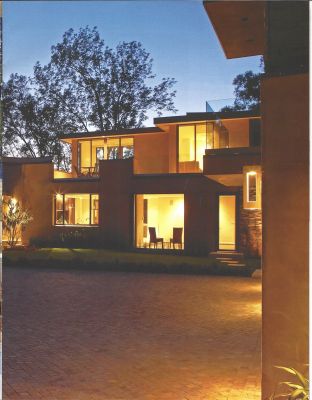
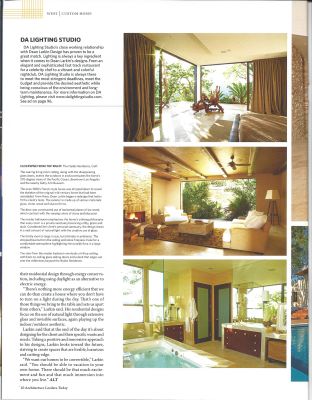
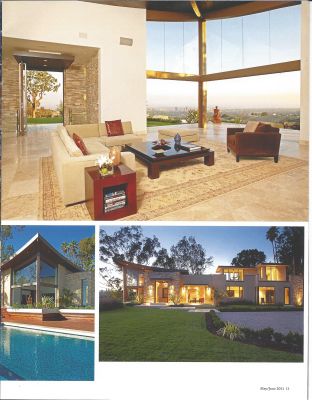
Blurring the Lines
Dean Larkin Design’s famous indoor/outdoor aesthetic has made his firm one of the most sought-after in L.A.
A born and raised Angelino, architect Dean Larkin has spent the last two decades designing both residential and commercial real estate focused on the Southern Californian lifestyle. Heavily fixated on indoor/outdoor concepts of design, Larkin’s work distinguishes itself as a fusion Of mid-century modern and out-of-the-box aesthetics; a look that Larkin says has defined his firm, Dean Larkin Design, as a leading high-profile architectural firm in Los Angeles.
“I foster a team approach with everyone,” Larkin said. “We’re 100 percent all on the same page. Everyone gets excited during the design process. Of course, we’ll be challenged and people will have different opinions. But people come to us to give them something out-of-the-box and we will meet their needs.”
Much of the success of Larkin’s design process with his clients can be credited to the team-like approach he uses in the office. Rather than taking a more traditional and hierarchical approach, Larkin says he runs a democratic office, where he and his team collaborate to produce the best designs for their demanding clientele.
“We get a good reputation because of the way we approach projects,” Larkin said. “Even the ‘tough cities’ don’t seem tough to US. When people are really committed to design, well take it on and do our homework and get it right. Our clients have a good time and that’s how it should be, it’s how I was taught, that’s what really sets us apart from many other firms. We know our stuff.”
While Larkin and his close knit team have developed a successful design process, they are not immune to the daily challenges that come with balancing the wants of a client with the architectural vision of Larkin and his team. According to Larkin, the level of his clients’ sophistication has steadily increased over the last 10 years; and, he has found that his high-end clients are more passionate and appreciative of quality design, as well as more honed demands. Larkin said that rather than see his client’s needs as a challenge, he takes them on as opportunities to diversify his portfolio and raise the bar for his firm –helping it evolve into what it has become today.
Larkin and his team recently completed the first Vivienne Westwood store in the U.S. located in West Hollywood, Larkin evolved his aesthetic for the famously irreverent British fashion designer, and incorporated his signature indoor/outdoor design concept. The store’s opening brought out the Hollywood stars and celebrities, but projects like that do not come knocking on Larkin’s door every day.
Even in the face of the economic downturn, Larkin and his team have been able to come through relatively unscathed. Speaking to the longevity and financial strength of his firm, Larkin said that he was able to hire new employees in 2010, something many architectural firms could not. Larkin credits his financial success to growing the firm’s residential market — going back to their base, so to speak.
“I made a very concerted effort not to be too commercial heavy,” Larkin said. “I put the effort into ‘when times get tough, go back to your base.’ So I made a real effort in 2008 to put an effort into growing our residential market. That’s proved to be a really good move for the firm. We’re not unscathed but we haven’t had to do a lot of the drastic cutbacks our peers have.”
The firm has recently expanded their portfolio into sustainable design. While some of his clients have been weary of green practices, Larkin said that he and his team incorporate green elements into their residential design through energy conservation, including using daylight as an alternative to electric energy.
“There’s nothing more energy efficient that we can do than create a house where you don’t have to turn on a light during the day. That’s one of those things we bring to the table and sets us apart from others,” Larkin said. His residential designs focus on the use of natural light through extensive glass and invisible surfaces, again playing up the indoor/outdoor aesthetic.
Larkin said that at the end of the day it’s about designing for the client and their specific wants and needs. Taking a positive and innovative approach to his designs, Larkin looks toward the future, striving to create spaces that are livable, luxurious and cutting-edge.
“We want our homes to be convertible,” Larkin said. “You should be able to vacation in your own home. There should be that much excitement and fun and that much immersion into where you live.” ALT